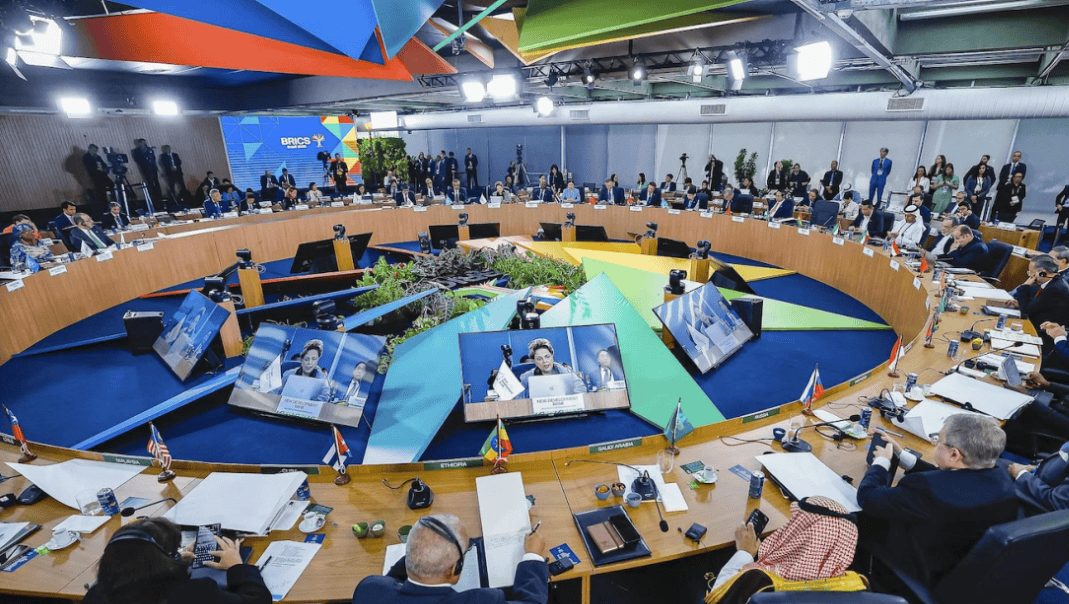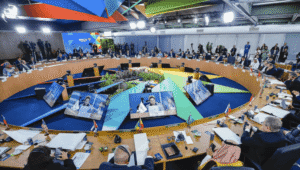The Middle Ages are widely understood as an era of economic immobility. This column uncovers a more nuanced picture. Wealth transmission in late medieval Florence was characterised by both mobility and persistence. While there was a notable degree of social mobility across adjacent generations, privilege tended to persist over longer horizons. Social and political networks played a significant role in generating such persistence, with families embedded in marriage networks and political institutions securing prosperity and status. The findings provide a historical perspective on the dynamics of wealth transmission.
It is a widespread belief that the Middle Ages were characterised by an immobile society in which socioeconomic status was transmitted inexorably from fathers to sons, in a context of little opportunity to climb the social ladder, no system of public education, and inherited professions. This idea is consistent with empirical results by Mocetti and Barone (2016) documenting that the top income earners in contemporary Florence descend from the wealthiest families of the 15th century. Our study (Belloc et al. 2024a) uncovers a more nuanced picture. Quite surprisingly, we find a relatively high degree of short-run mobility in late medieval Florence, not so distant from that of modern Western societies. But this result masks a deep-rooted persistence of economic status across generations over the longer run. These findings not only refine our knowledge of the historical processes of intergenerational wealth transmission; they also offer valuable insights into broader underlying mechanisms that continue to influence inequality in modern societies.
In the paper, we exploit a large dataset that combines four subsequent wealth assessments – 1403, 1427, 1457, and 1480 – to provide detailed information on the universe of Florentine households spanning nearly a century. 1 The richness of the dataset allows us to investigate the transmission mechanisms within direct (parent-son) family ties as well as broader kinship networks and to study the underlying data generating process.
We begin by evaluating the extent of short-term social mobility through the estimation of two-generation models. Our results, obtained by regressing children’s wealth outcomes on those of their parents, suggest that Florentine society was relatively mobile in the short run over the considered time span, with estimated rank-rank correlation coefficients between 0.4 and 0.5 comparable to the correlation coefficients found in modern cities (two-generation coefficients for 20th-century Sweden, estimated by Adermon et al. 2018, go from 0.3 to 0.4 depending on the specification). These findings are consistent with other studies documenting a fair amount of socioeconomic mobility in medieval urban centres (Padgett 2010).
We then consider intergenerational wealth transmission across multiple generations. The adoption of the two-generation correlation coefficients to make inferences on the long run is likely to systematically overestimate the degree of mobility. Indeed, as discussed by several authors (Braun and Stuhler 2018), these extrapolations are likely to neglect important factors underlying the actual wealth transmission process. This is confirmed by our data when we link children directly to grandfathers and find substantially larger numbers (meaning lower mobility) than those inferred from standard iteration techniques.
To explain these findings, we evaluate two potential explanations. The first is the ‘grandparental effects model’, according to which grandparents pass their status to grandchildren via direct transmission of wealth, resources, or skills. The second is the ‘latent factor model’, which attributes wealth persistence to an unobserved factor that is passed down across generations at a high rate and that correlates to wealth without necessarily involving direct contact. In both models, mobility between two generations can be high. But in the long run, with the contribution of either the grandparents (in the first model) or the latent factor (in the second model), persistence of the economic status is empirically generated.
We run a series of exercises to discriminate between the two possible data processes, and our results lend support to the latent factor model. For example, we demonstrate that even in cases with little likelihood of direct interaction between (great-) grandparents and (great-) grandchildren (due to age difference or other factors), wealth outcomes of the younger generation are still strongly correlated with those of the elder generation. This suggests that wealth transmission is mediated by factors other than direct inheritance or financial transfers, providing evidence for the role of a latent factor.
We also discuss how our findings can explain the very long-term persistence of economic status, documented by Barone and Mocetti (2021), which links Florentine families’ wealth from the 15th century (1427) to economic status in the present day (2011). To this purpose, we simulate wealth transmission over 600 years by employing our previously estimated coefficients. Figure 1 depicts the horse race across alternative approaches. While the latent factor model run with our data predicts a slightly lower degree of long-term wealth persistence than that found by Barone and Mocetti, our findings confirm that wealth status can persist across many generations and that this is true even in the presence of a discrete amount of mobility in the short run (two-generation model). This conclusion further supports the latent factor model’s explanatory power of very long-run trends.
Figure 1 Prediction of wealth status transmission from alternative models


Notes: The picture shows the predicted correlation coefficients across m-generations from alternative models: latent factor model, iterative model, and grandparental effects model. The shaded area depicts the range of the estimated coefficient across 19 generations by Barone and Mocetti (2021). * Predictions are obtained assuming a constant heritability parameter. ** Predictions are obtained assuming that the heritability parameter declines by 1% every generation.
Finally, we explore mechanisms that could explain wealth status persistence and identify possible latent factors. In particular, we investigate the potential role of marriage networks and political participation. As regards the former, we complement our data with information on Florentine marriage networks (Padgett 2010) and find that families with higher ‘structural cohesion’ (measured by the number of marriage links to be severed to disconnect a family from the network) tend to experience greater wealth persistence. In other words, families that were more deeply embedded in the social fabric of Florence through marriage links were better able to maintain their economic status across generations. As for the latter, we employ data on political participation (the Tratte records) from Herlihy et al. (2002). We determine that Florentine citizens who held political office were more likely to belong to families with enduring wealth status, suggesting that access to political power helped reinforce economic advantage for wealthy elites. This connection between wealth and political influence underscores the importance of social capital in the transmission of wealth.
Our study adds to the growing body of literature on the intergenerational transmission of economic status, particularly in historical contexts. While much of the recent research focuses on contemporary societies (Pica et al. 2018, Polo et al. 2019, Porter et al. 2018), we show that similar mechanisms of wealth transmission were operating centuries ago. Our findings are consistent with other studies that have examined long-term wealth persistence, such as those by Ager et al. (2021) and Clark (2014), which also found that wealth status can persist for many generations, driven by latent factors rather than direct inheritance alone. By linking wealth data across multiple generations in premodern Florence, we provide insights into the broader forces that shape economic mobility. From the simple estimation of two-adjacent generation models, we are unable to make inferences on economic status persistence over the long run. We also highlight the importance of social networks and political engagement in maintaining wealth, even during an era marked by significant social and political change (Belloc et al. 2024b, Goldthwaite 2009, Najemy 2006). The use of a dataset spanning over four generations offers a rare opportunity to analyse long-run economic mobility in a historical setting, contributing to a more nuanced understanding of how wealth is transmitted over time.
In conclusion, we find that wealth transmission in late medieval Florence was characterised by both mobility and persistence. This is not an oxymoron. While there was a notable degree of social mobility across two adjacent generations, wealth status tended to persist over longer horizons, driven by latent factors transmitted across multiple, possibly non-adjacent generations. Social and political networks played a significant role in generating such persistence, with families embedded in marriage networks and political institutions better able to secure their wealth and status. Our findings provide a historical perspective on the long-term dynamics of wealth transmission and offer lessons for understanding contemporary patterns of economic mobility.
Source : VOXeu



































































